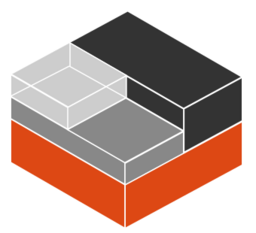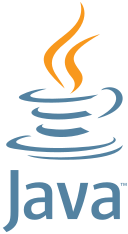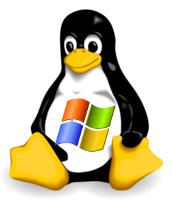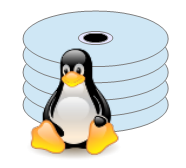Linux
 Can you use ALSA to get 'bit-perfect' audio playback on Linux?
Can you use ALSA to get 'bit-perfect' audio playback on Linux?Regardless of the subjective merits of 'bit-perfect' audio, is it technically possible on Linux?
 antiX vs. MX Linux on old-ish laptops
antiX vs. MX Linux on old-ish laptopsMX and antiX are both Linux variants that offer some hope to people who want to keep their old-ish computers running. Both tip-toe around the systemd rabbit hole, but in different ways. But which is better?
Categories: Linux
 AppImage from scratch
AppImage from scratchThis article describes how AppImage packaging works on Linux. It's based on a simple demonstration that uses nothing but commonplace command-line tools, to create a self-contained, distributable application (albeit a trivial one).
Categories: Linux
 Adventures with Artix
Adventures with ArtixArtix is a low-resource Linux that can be configured to run well on old, low-powered computer hardware. In this article, I describe my first attempts at setting it up.
Categories: general computing, Linux
 Going back to ALSA in 2024
Going back to ALSA in 2024Not everybody likes Pulse audio or PipeWire. But is it practicable to abandon them in favour of traditional ALSA at this point?
 Extending the bash 'cd' command in Linux
Extending the bash 'cd' command in LinuxThe built-in cd command in the bash shell is not as smart as it could be; but it's a little fiddly to extend its functionality.
Categories: Linux
 Command-line hacking: countdown timer
Command-line hacking: countdown timerUsing Linux date calculations to displaying a running countdown time in the terminal.
Categories: Linux, command-line hacking
 Command-line hacking: Assigning folder icons to directories
Command-line hacking: Assigning folder icons to directoriesHow to use basic Bash constructs, along with the Gnome gio utility, to assign folder icons to a set of directories.
Categories: Linux, command-line hacking
 Command-line hacking: calculating the phase of the Moon
Command-line hacking: calculating the phase of the MoonHow to use Bash shell arithmetic, along with the 'date' utilty, to calculate the phase of the Moon on a particlar day.
Categories: Linux, command-line hacking
 Command-line hacking: displaying news headlines in the manual viewer
Command-line hacking: displaying news headlines in the manual viewerHow to use tools like curl and xsltproc to retrieve news headlines from the BBC, and display them using the manual viewer
Categories: Linux, command-line hacking
 Command-line hacking: paced breathing
Command-line hacking: paced breathingUsing a Linux Bash script to generate audio/visual cues for timing paced breathing exercises.
Categories: Linux, command-line hacking
 Command-line hacking: querying an Internet radio database
Command-line hacking: querying an Internet radio databaseUsing Linux command-line utilities to query an on-line database of Internet radio stations.
Categories: Linux, command-line hacking
 Command-line hacking: extracting audio metadata (tags)
Command-line hacking: extracting audio metadata (tags)How to use Bash shell techniques to extract metadata (tags) from various audio file formats.
Categories: Linux, command-line hacking
 Command-line hacking: displaying system temperature
Command-line hacking: displaying system temperatureUsing simple file and string handling techniques in the Bash shell.
Categories: Linux, command-line hacking
 Command-line hacking: creating a tide table
Command-line hacking: creating a tide tableHow to use Bash shell arithmetic to create a simple tide table
Categories: Linux, command-line hacking
 Command-line hacking: displaying a weather summary
Command-line hacking: displaying a weather summaryHow to use tools like curl, sed, and groff to retrieve a weather forecast from the BBC, and format it for the terminal.
Categories: Linux, command-line hacking
 Command-line hacking: timezone conversions
Command-line hacking: timezone conversionsUsing 'date' and 'timedatectl' to build a utility to help with scheduling meetings in different timezones.
Categories: Linux, command-line hacking
 Why the Linux console is so awesome
Why the Linux console is so awesomeWe've all gotten so used to graphical desktops that we're losing sight of how much can be accomplished on Linux using only a console. This is a shame, because efficient console-only operation is possible on a computer that would otherwise be fit only for landfill, and on modern high-efficiency devices with limited computing power.
Categories: Linux
 Using media keys in a Linux console application
Using media keys in a Linux console applicationMapping keyboard keys to key codes on Linux is well-documented for the graphical desktop. But what about console applications on embedded Linux systems? There's not much documentation in this area.
Categories: Linux, C, embedded computing
 Container from scratch: building a Linux container from the ground up
Container from scratch: building a Linux container from the ground upContainers have become increasingly important for Linux developers and administrators. A number of frameworks like LXC, Docker, and Podman are now available to automate the management of containers. However, all these frameworks rely on similar kernel features, particularly control groups, namespaces, and virtual networks. This article demonstrates how to build a functional container from first principles, using only simple command-line tools. It's objective is to make clear all the details that the more sophisticated tools conceal.
Categories: Linux, containers
 Why you can't rely on system calls to obtain limits, when running an application in a container
Why you can't rely on system calls to obtain limits, when running an application in a containerThe notion of resource limits (on memory, CPU, etc) has never been very well-defined, and the use of container-based deployment makes the situation worse. This article describes why, and what can be done about it.
Categories: Linux, containers
 Yet another Darktable/Lightroom comparison
Yet another Darktable/Lightroom comparisonDarktable isn't supposed to be an alternative to Adobe Lightroom, but many people hope to use it as one. After all, Darktable's (free) pricing is very appealing. Here are my views on whether a move to Darktable makes sense.
Categories: general computing, Linux
 You be the linker -- building Hello, world from scratch, in hexadecimal
You be the linker -- building Hello, world from scratch, in hexadecimalThis article describes how to write a trivial program for Linux using no compiler tools at all, but entering machine language directly in hexadecimal. Because we can.
Categories: software development, Linux
 Making a Java JAR file self-executing (on Linux)
Making a Java JAR file self-executing (on Linux)A quick-and-dirty way to make it possible to execute Java JAR files at the prompt, without needing to invoke the JVM.
Categories: software development, Java, Linux
 Using the FreeType library to render text nicely onto a Linux framebuffer
Using the FreeType library to render text nicely onto a Linux framebufferWriting graphical applications for minimal and embedded Linux systems can present a challenge. One of the problems is producing nicely-rendered text without the facilities that a graphical desktop would provide. This article describes how to use the FreeType library to render text to the Linux framebuffer.
Categories: software development, C, Linux, embedded computing, Raspberry Pi
 Are Flatpak, et al., saving or drowning the Linux desktop?
Are Flatpak, et al., saving or drowning the Linux desktop?Desktop Linux will take off next year -- or so people have been saying for years. Do desktop containerization technologies like Flatpak make this more, or less, likely?
Categories: Linux, containers
 Gentoo vs. MX Linux on old-ish laptops
Gentoo vs. MX Linux on old-ish laptopsIt isn't easy to run Linux well on ten-year-old laptops -- Linux distribution maintainers no longer see this as a worthwhile endeavour. In this article I compare Gentoo and MX Linux as potential solutions to this problem.
Categories: Linux
 One month with Gentoo
One month with GentooWill my Gentoo journey be coming to an end after the first month?
Categories: general computing, Linux
 Using Private Internet Access VPN with Gentoo Linux
Using Private Internet Access VPN with Gentoo LinuxIt's not that difficult, but there's no built-in support.
 Gentoo Linux -- is this the solution to the Winux problem?
Gentoo Linux -- is this the solution to the Winux problem?Even seasoned Linux developers speak of Gentoo in hushed tones. It's not for the faint-hearted, that's for sure. But how stout-hearted must you be, for Gentoo to be appropriate?
Categories: general computing, Linux
 Extracting software from the Raspbian repository, for assembling a custom Linux image for the Raspberry Pi
Extracting software from the Raspbian repository, for assembling a custom Linux image for the Raspberry PiUsing the official Raspian repository to assist the construction of a custom Linux for embedded applications is quick and convenient, compared to building everything from source. However, this approach has certain hazards.
Categories: Linux, Raspberry Pi, embedded computing
 Using ImageMagick to generate anti-aliased bitmap fonts for a microcontroller's LCD display
Using ImageMagick to generate anti-aliased bitmap fonts for a microcontroller's LCD displayThis article describes how to generate and use compressed, anti-aliased font data, for use in a microcontroller application.
Categories: C, Linux, embedded computing, Pico
 Creating an animated score for demonstrating musical compositions on YouTube, etc
Creating an animated score for demonstrating musical compositions on YouTube, etcAnimated musical scores are quite common on YouTube, for educational and promotional purposes. This article explains how to create one, using OpenShot and other Linux tools.
 Conway's Game of Life in 3D perspective
Conway's Game of Life in 3D perspectiveImplementing a program to run Conway's cell population simulation, using a 3D perspective view on the Linux framebuffer.
Categories: software development, C, Linux
 How Linux home directory encryption works
How Linux home directory encryption worksEncryption of home directories is out of favour in modern Linux distributions, but it offers some compelling advantages over the alternatives, if used with care.
Categories: Linux
 Comparing Dropbox, pCloud, and rsync.net for off-site storage for Linux users
Comparing Dropbox, pCloud, and rsync.net for off-site storage for Linux usersFor a Linux user in particular, which of these popular services is the most effective?
Categories: Linux
 Ten steps to becoming a Linux snob
Ten steps to becoming a Linux snobThere was a time when merely being a Linux user set you apart from the common herd. These days, with Linux so ubiquitous, you'll need to take additional steps to make yourself out as one of the elite.
Categories: Linux
 A Linux storage management cheat-sheet
A Linux storage management cheat-sheetThis article outlines, with step-by-step examples, how to carry out the most fundamental Linux storage management tasks: partitioning a disk, creating a filesystem, setting up swap space, managing a logical volume management (LVM) storage pool, and configuring a RAID mirror.
Categories: Linux
 Using the Linux framebuffer in C/C++ -- just the essentials
Using the Linux framebuffer in C/C++ -- just the essentialsThe absolute minimum information needed to start using the Linux framebuffer as a graphical display in C/C++ applications.
Categories: software development, C, Linux, embedded computing
 Using the Linux framebuffer in C/C++ -- just the essentials (part 2)
Using the Linux framebuffer in C/C++ -- just the essentials (part 2)This article continues my original framebuffer just the essentials article, by describing how to handle less straightforward framebuffer configurations.
Categories: software development, C, Linux, embedded computing
 More like Windows every day
More like Windows every dayThe ease of installation and use of modern desktop Linux distributions comes at a price. I review a couple of low-complexity alternatives to mainstream Linux distributions: Alpine and Devuan.
Categories: general computing, Linux
 Fitting an NVMe disk in a computer with no NVMe support
Fitting an NVMe disk in a computer with no NVMe supportCan you fit an NVMe solid-state drive into a computer that was made long before NVMe was invented? And should you?
Categories: Linux
 Making a Raspberry Pi bootable SD card from a root filesystem
Making a Raspberry Pi bootable SD card from a root filesystemYou've created a custom Linux installation for the Raspberry Pi. How do you turn that into a bootable SD card image that can be distributed?
Categories: Linux, Raspberry Pi
 Converting push-button events to keyboard events in the Raspberry Pi
Converting push-button events to keyboard events in the Raspberry PiThe Raspberry Pi has a bunch of GPIO pins we can use to connect push-buttons. But how do we interface push-buttons to an application that expects only keyboard input?
Categories: Raspberry Pi, electronics, Linux
 Rolling your own minimal embedded Linux for the Raspberry Pi -- part four: audio
Rolling your own minimal embedded Linux for the Raspberry Pi -- part four: audioThis article is part of a series on building a customer Linux installation for a Raspberry Pi-based appliance. It explains how to install and set up the minimum software to get audio playback working.
Categories: Raspberry Pi, Linux, embedded computing
 Rolling your own minimal embedded Linux for the Raspberry Pi -- part one: booting to a root shell
Rolling your own minimal embedded Linux for the Raspberry Pi -- part one: booting to a root shellThis article is part of a series on building a custom Linux installation for a Raspberry Pi-based appliance. It explains how to make a bootable SD card with Pi firmware, a Linux kernel, and a shell. It's about as minimal as a Linux system can be.
Categories: Raspberry Pi, Linux, embedded computing
 Rolling your own minimal embedded Linux for the Raspberry Pi -- part two: early initialization
Rolling your own minimal embedded Linux for the Raspberry Pi -- part two: early initializationThis article is part of a series on building a customer Linux installation for a Raspberry Pi-based appliance. It explains how to obtain and install fundamental utilities for use in a system with a read-only filesystem, and no package manager.
Categories: Raspberry Pi, Linux, embedded computing
 Rolling your own minimal embedded Linux for the Raspberry Pi
Rolling your own minimal embedded Linux for the Raspberry PiIntroducing a series of articles on building a custom Linux installation for the Raspberry Pi, for appliance applications.
Categories: Raspberry Pi, Linux, embedded computing
 Rolling your own minimal embedded Linux for the Raspberry Pi -- part three: services and remote access
Rolling your own minimal embedded Linux for the Raspberry Pi -- part three: services and remote accessThis article is part of a series on building a customer Linux installation for a Raspberry Pi-based appliance. It explains how to set up a system which hitherto only boots to a root shell, to a network-aware installation with service management.
Categories: Raspberry Pi, Linux, embedded computing
 Rolling your own minimal embedded Linux for the Raspberry Pi -- part five: X
Rolling your own minimal embedded Linux for the Raspberry Pi -- part five: XIt's entirely possible to run simple, X-based applications in an appliance-based Linux installation: you just have to dispense with the graphical desktop and all its baggage. This article explains how.
Categories: Raspberry Pi, Linux, embedded computing
 Using flash memory as non-volatile storage on the Pi Pico microcontroller
Using flash memory as non-volatile storage on the Pi Pico microcontrollerThe Pi Pico is an impressive microcontroller for its size and cost, but it lacks specific non-volatile memory. This article explains how to use the program flash ROM for that purpose.
Categories: software development, C, Linux, embedded computing, Pico
 C-to-parallel IC
C-to-parallel ICMake an auxiliary LCD display for a computer that displays data sent to it over a USB connection. Ready-made devices of this sort are widely available, but it's more fun to build your own.
Categories: software development, C, Linux, embedded computing, Arduino
 Sorting files and directories on a FAT-formatted USB memory stick
Sorting files and directories on a FAT-formatted USB memory stickMany portable and automotive media players accept USB memory sticks or SD cards containing audio files. Very often, these players have no sorting logic, and display files and directories in the arbitrary order they appear in the filesystem. This article describes how to sort a FAT filesystem using Linux utilities, to make playback more convenient.
 Making simple stop-motion animations using Linux and a DSLR camera
Making simple stop-motion animations using Linux and a DSLR cameraCreating stop-motion animated movies using a DSLR camera and some basic Linux tools. It won't rival Pixar, but it's something to do with your kids on a rainy Sunday afternoon.
Categories: science and technology, Linux
 Why systemd is a problem for embedded Linux
Why systemd is a problem for embedded LinuxI don't want to post yet another anti-systemd rant, but I think the ubiquity of systemd could eventually create real problems for embedded Linux. I just wish I knew what to do about it.
Categories: Linux
 Using thinkfan for fan control on Lenovo (Linux) laptops
Using thinkfan for fan control on Lenovo (Linux) laptopsI don't much care for how hot my laptops run, before the cooling system takes action to bring the temperature under control. What can be done about that?
Categories: Linux
 A few interesting features of Vim, part 1
A few interesting features of Vim, part 1The Vim text editor is almost ubiquitous on Linux systems, and for good reasons. This is the first article in a series which seeks to uncover some handy features of Vim, that don't seem to be widely known.
Categories: Linux
 Wayland from the ground up
Wayland from the ground upWayland isn't new, but many of us have been able to avoid it until recently. With many Linux distributions now pushing Wayland hard -- even for the Raspberry Pi -- it's getting harder to justify ignoring it. This article is for people who have been hoping until now that Wayland will go away, particularly X developers, and don't know much about how it works
Categories: Linux
 Using Windows is like smoking (?)
Using Windows is like smoking (?)As the Microsoft Windows user experience continues to worsen, what should Linux advocates do?
Categories: general computing, Linux
